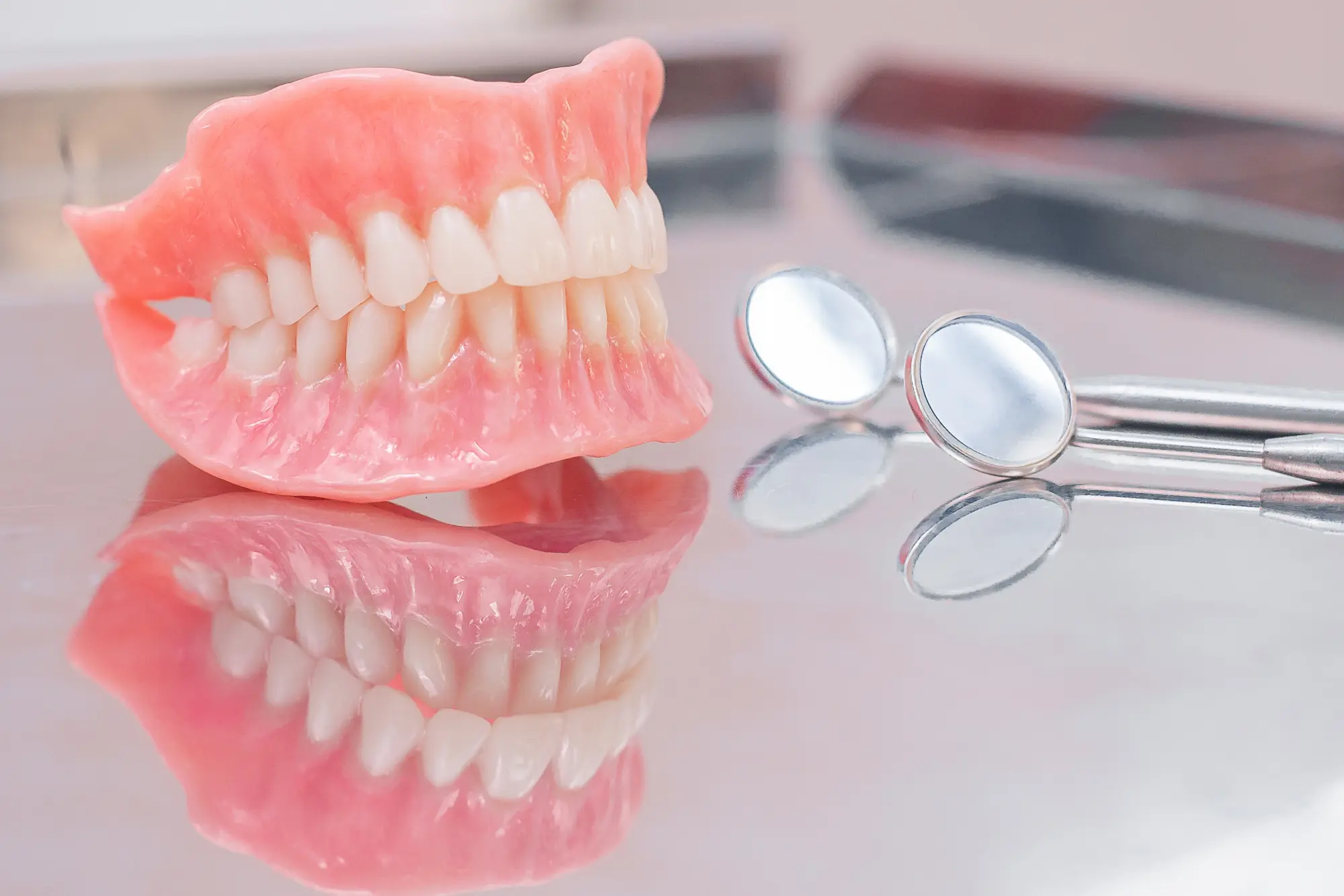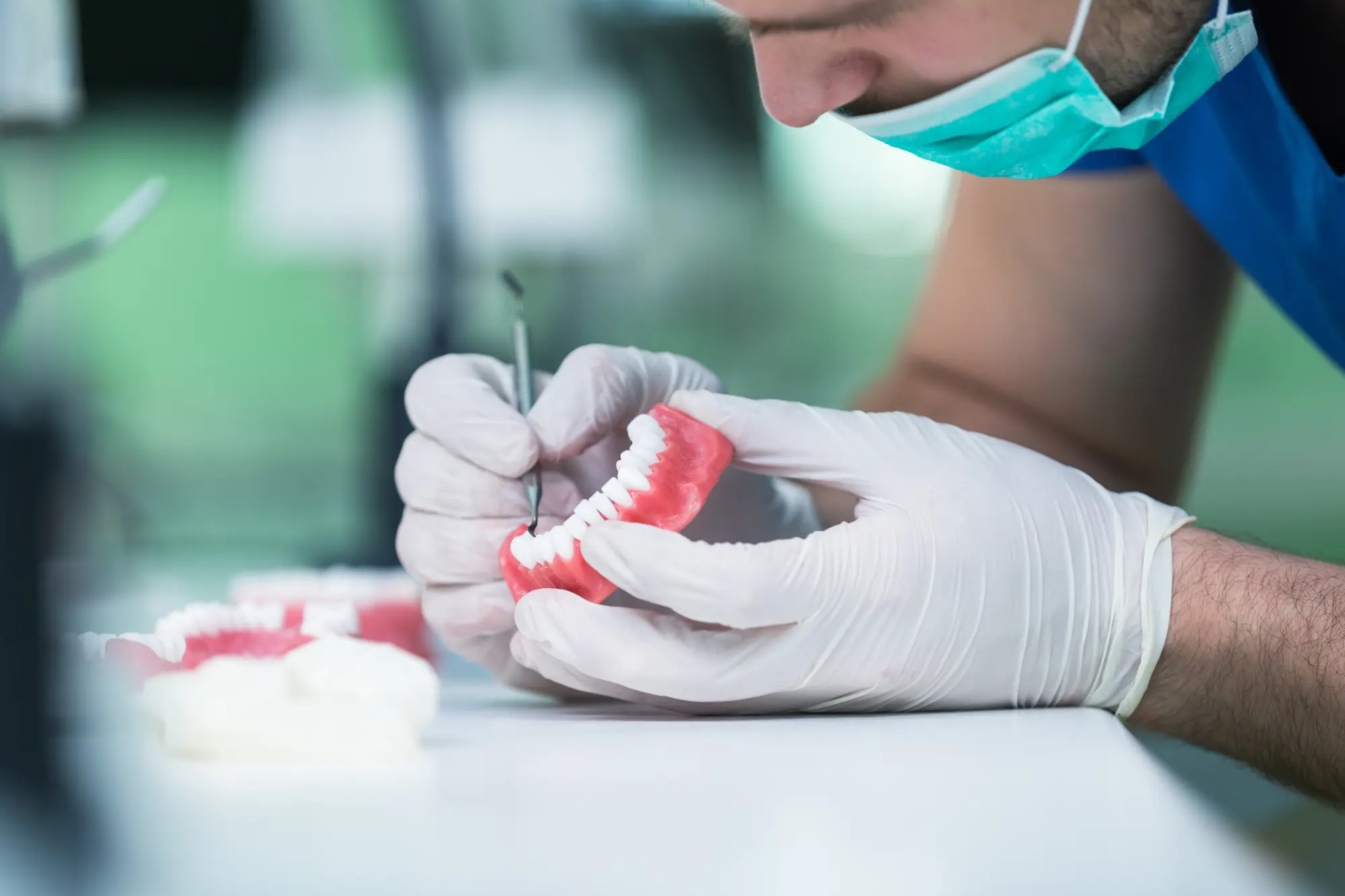Denture Treatment Plan Decision TreeIn Bowie

Open Hours
- MON
- 8 AM - 4 PM
- TUE
- 8 AM - 4 PM
- WED
- 8 AM - 4 PM
- THUR
- 8 AM - 4 PM
- FRI
- 8 AM - 1 PM
- SAT
- CLOSED
Prerequisites
Before beginning any denture treatment, it’s important to confirm that this is the right path based on a patient’s overall oral health. Dentures are typically recommended when:
- The extent of tooth loss can’t be corrected with individual restorations
- Remaining teeth are too compromised to support a bridge or implant
- Health, bone density, or budget make other treatments less viable
- The pattern of tooth loss makes removable prosthetics the most practical solution
Once these foundational factors are confirmed, we use a structured treatment planning process to identify which type of denture will provide the best balance of comfort, function, and long-term success.

Did you know…
- Dentures supported by implants help prevent future jawbone loss.
- Removable partial dentures can last 7–10 years with healthy supporting teeth.

Decision Points for Dentures
Extent of Tooth Loss for Denture Treatment
If all teeth in an arch are missing, a complete denture is required. If some teeth remain and are healthy, a partial denture may offer better stability and function by anchoring to natural teeth.
Bone Assessment for Complete Dentures
When no natural teeth remain, bone quality determines your options. Adequate bone may allow for implant-supported dentures, while low bone volume may mean conventional suction-based dentures are a better fit.
Number of Implants for Support
Implant-supported dentures can range from two implants (for budget-conscious stability) to four or more (for maximum support and bite strength). The number of implants is based on anatomy, budget, and lifestyle needs.
Remaining Teeth Assessment
Partial dentures rely on the strength of remaining teeth. If teeth are healthy, they serve as strong anchors. If not, a different design—or even a full denture—may be needed to ensure long-term success.
Aesthetic Concerns with Partial Dentures
Some partial dentures have visible metal clasps. For patients who prioritize appearance, we offer aesthetic alternatives with tooth-colored or hidden attachments that blend naturally with your smile.
The Denture Treatment Process
Evaluating Tooth Loss
Evaluating Tooth Loss
We start by determining how many teeth need to be replaced. If all teeth in an arch are missing, we explore full dentures. If some healthy teeth remain, we assess whether they can be used to support a partial denture. This decision sets the foundation for what’s possible in terms of stability, comfort, and retention—and helps us decide whether to rely on gum and bone support, or natural anchor teeth.
Assessing Bone or Tooth Support

Assessing Bone or Tooth Support
Next, we evaluate the health of your jawbone (for full dentures) or remaining teeth (for partial dentures). For full dentures, sufficient bone means you may be a candidate for implant support. If bone is inadequate, a traditional suction-based denture may be best. For partials, we look at tooth stability and bone support around those teeth to ensure they can handle the extra load of clasp and rest attachments.
Matching Your Priorities to Treatment Type
Matching Your Priorities to Treatment Type
Once we know what your mouth can support, we factor in your personal goals. Prefer affordability? A conventional denture or 2-implant solution may be ideal. Want rock-solid stability or a metal-free smile? We can plan for multiple implants or aesthetic clasps. This step is all about pairing your clinical needs with your lifestyle, confidence, and long-term comfort.


Frequently Asked Questions
Check out these frequently asked questions, or call us to speak with our team.
Dentures are typically recommended when most or all teeth are missing, or if remaining teeth are too compromised to support bridges or other restorations. If you’ve experienced significant tooth loss or your current dental health makes other options less practical, dentures may be the most effective solution.
Full dentures replace all the teeth in your upper or lower arch, while partial dentures fill gaps where some healthy teeth remain. If your remaining teeth are strong enough to support a prosthetic, we may recommend a partial for improved comfort and retention.
Yes—if you have adequate bone in your jaw, implants can be placed to help anchor your denture in place. This creates a more secure fit and can make eating and speaking feel more natural. We’ll assess your bone health with imaging to see if this option is right for you.
You can still have a successful outcome with traditional dentures. These rest on your gums and are shaped for optimal suction and fit. In some cases, bone grafting may be possible to create future implant options, but many patients are happy with well-fitting conventional dentures.
That depends on your goals. A two-implant option is cost-effective and provides a major stability boost over traditional dentures. For maximum stability and performance—especially when eating tougher foods—four to six implants are often recommended.
Not always. Traditional metal clasps are strong and reliable, but we also offer aesthetic partial dentures with tooth-colored or hidden attachments. These are a great choice if you’re concerned about visible hardware when smiling.
We’ll evaluate their health carefully. If your teeth aren’t stable enough to support a partial denture, we may recommend removing them and considering a complete denture instead. In some cases, we can adjust the design to distribute force more gently—or add implant support.

